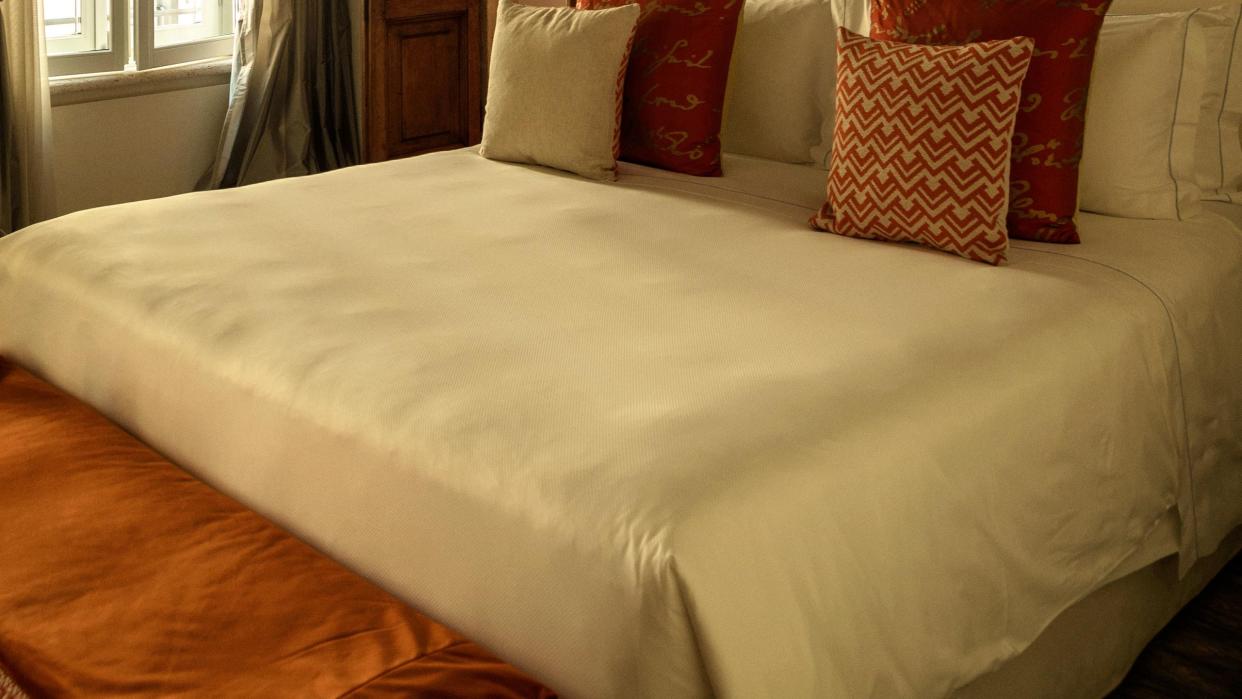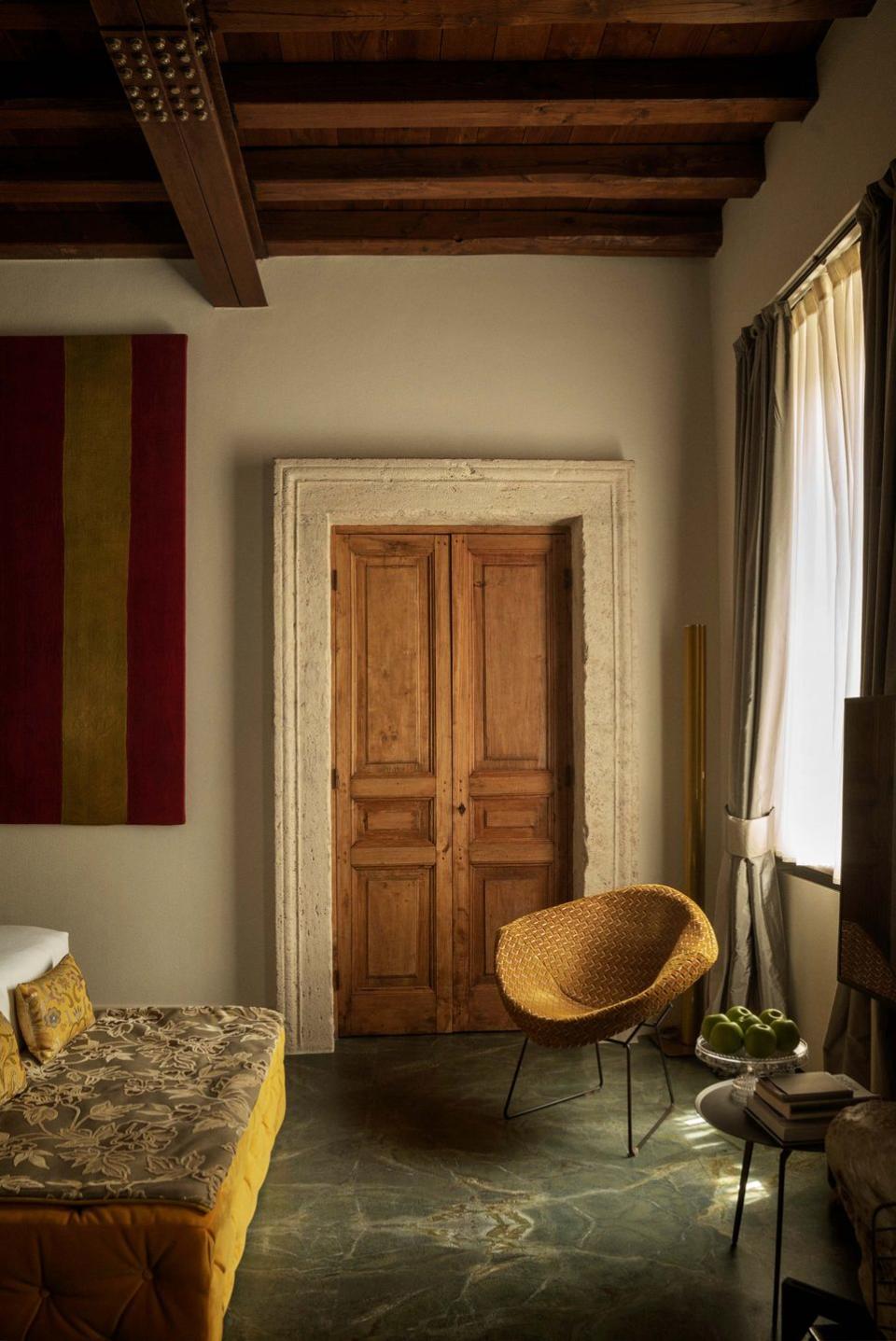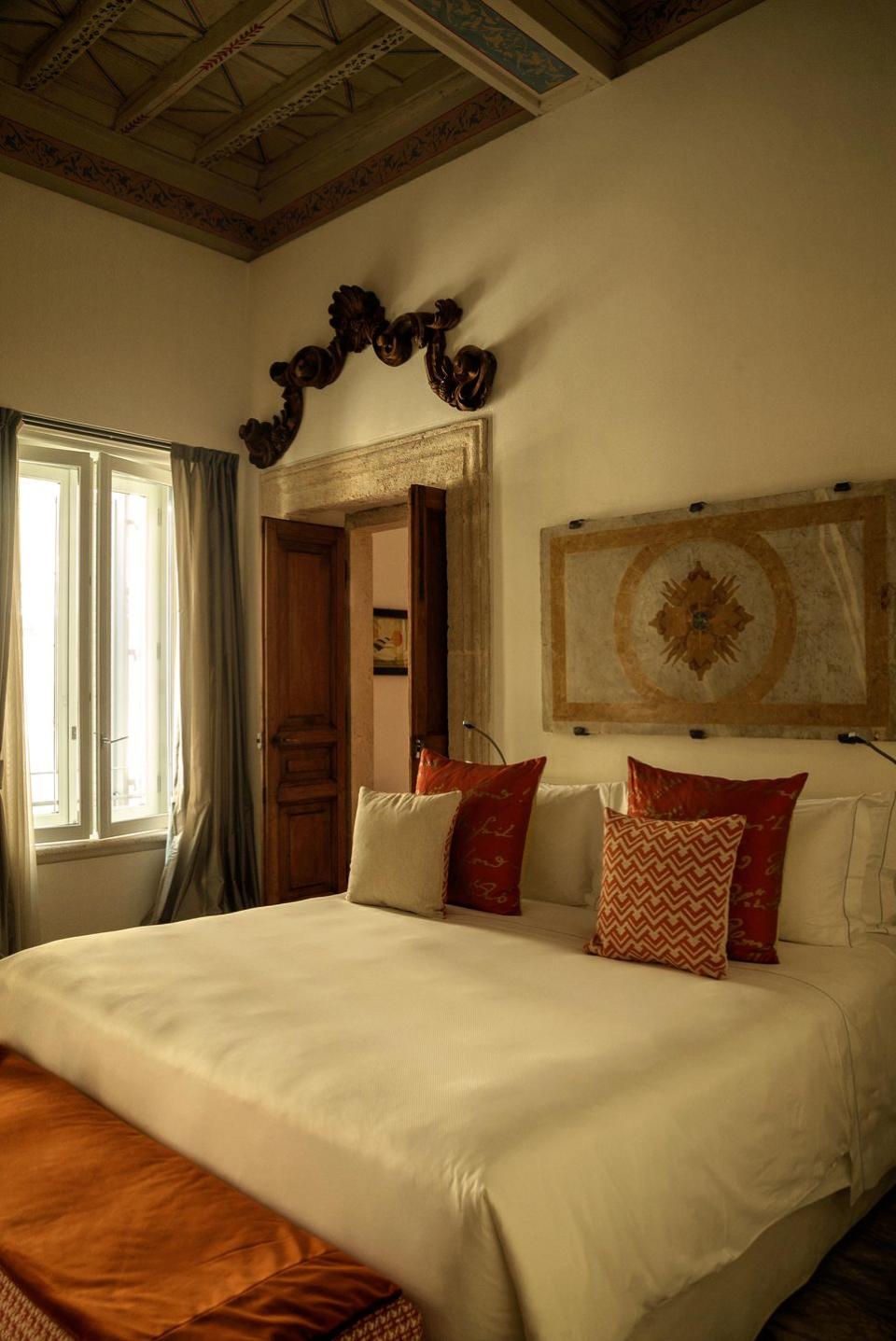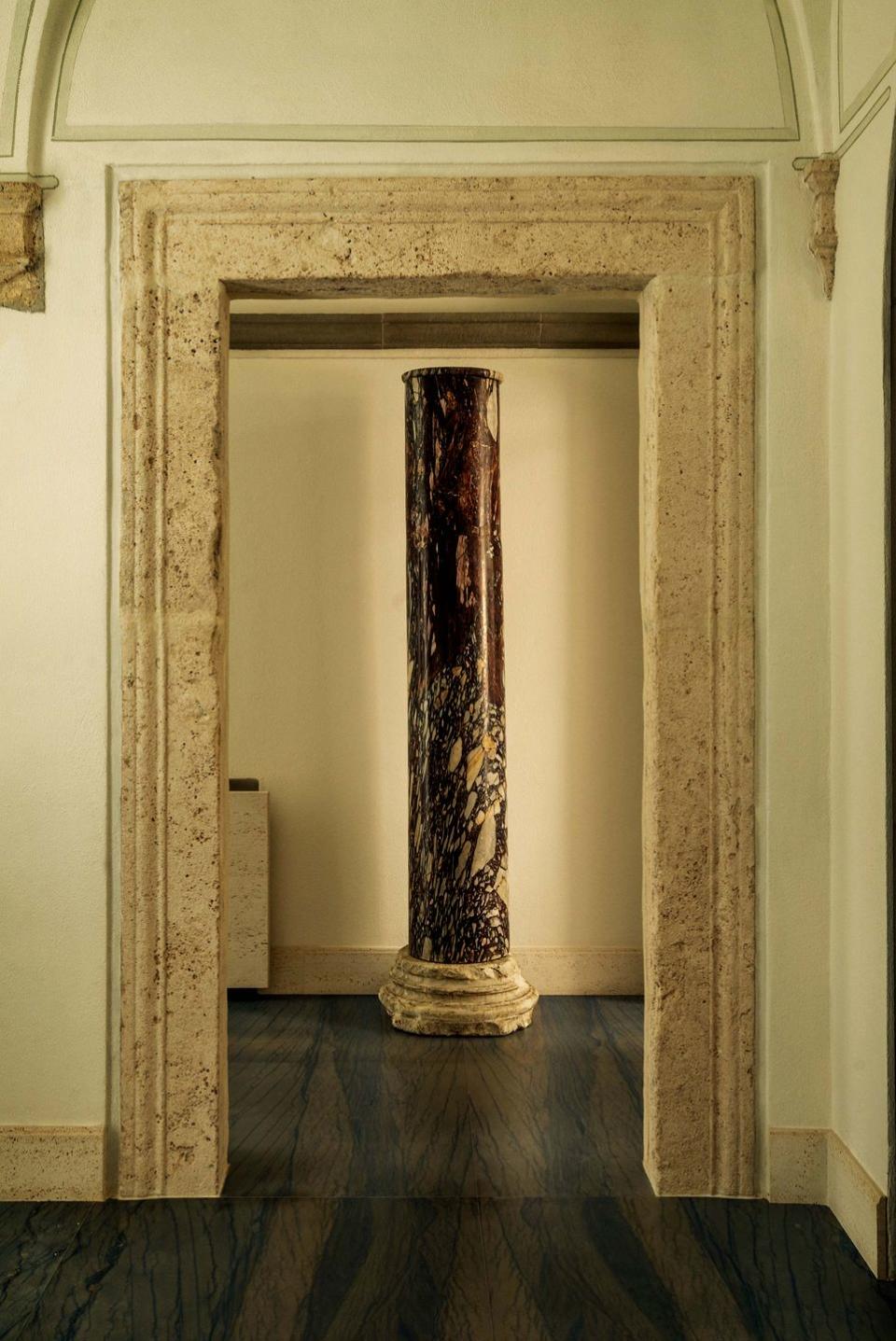The Best Room At... Palazzo delle Pietre

Carlo Mazzi needed a place to live. That is the simple story of how the former chairman of Prada came to create Palazzo delle Pietre, a family residence cum apartment hotel situated on a quiet street in the center of Rome, just around the corner from Piazza Navona.
He found the 15th-century building in 2012. It was in a state of total disrepair, but not without potential. And one key attraction: It was big enough to house his colossal collection—started five generations ago by his great-great-grandfather—of important Italian stones and artifacts, which date from the Roman Empire to the Renaissance.
"Collectors are slightly crazy, because they buy the works they like even if they don't know where to put them—except maybe stamp collectors," Mazzi tells T&C. "Before Palazzo delle Pietre I had many of my pieces stored in a warehouse, where I could not admire them."
This place easily took care of that problem. But rather than keep it all to himself, he decided to share: Seven years of restoration work transformed the top floor into the Mazzi family residence and the rest into a boutique hotel of 8 unique apartments, each one filled with an eclectic array of the family treasures. (A second property of two larger apartments, called La Corte, opened a block away last September).

Palazzo delle Pietre, which aptly translates to "Palace of Stones," doesn't have the usual bells and whistles of luxury hotels (tothere is a full-time concierge, and a basket of Roscioli pastries materializes every morning at the door), and that's sort of the point. Here it's about doing as the Romans do, assuming that means spending a week living in a very nice apartment where contemporary furnishings—by modern Italian design masters only—blend seamlessly with museum-quality ancient artifacts and surviving relics of the palazzo's 15th-century bones.
In few places can you sleep under an 18th-century Carrara marble inlay antependium, primp in a bathroom clad in Calacatta marble, and glide through an original travertine portal to the living room, where you might pull an espresso into a Richard Ginori tazzina and lounge on a De Padova sofa to watch some TV on a flatscreen that hovers over a Corinthian capital made in the 1st century A.D. Personal butlers and chefs available on request too, naturally.
"I decided to create a place that would house pieces of my collection in each room so that I could share with guests my own feeling of the value of man's work," Mazzi says. "And how rocks preserve it from the ravages of time." Below, he shares his Roman highlights.
What do you think is the best room at Palazzo delle Pietre, and why?
Each apartment is designed and furnished as if for my family. If I was to decide where to stay I would make a different choice for each season: for example, in spring I would like to stay in the Rooftop Terrace apartment at La Corte, which can accommodate six people and has a large terrace full of flowers (from €2,400/night), in midsummer I would go for the small apartment on the ground floor of the Palazzo, which has a shaded courtyard with a large antique fountain (cost €840/night). In winter I would opt for one of the large Prestige apartments on the first or second floor (from €2,000/night for 4 guests).

What type of traveler is Palazzo delle Pietre perfect for?
It's ideal for those who love the eternal beauty of Rome, a city steeped in the history of humanity which has crafted works of art in every era, spanning from Imperial Rome to the 20th century. On the contrary some may view Palazzo delle Pietre merely as a comfortable accommodation in the historic centre of Rome.
What is one thing about Palazzo delle Pietre that might surprise first-time guests?
That it does not present itself as a touristic establishment, but more like a home for those who believe culture to be a fundamental element of their travels, and something to share with other guests of the Palazzo and its owners. This idea is best represented by the Renaissance-era epigraph displayed in the atrium and inscribed with the phrase, Laribus tuum miscet numen, which means "unite your God with the spirits of the ancestors."

What is your favorite thing to do in Rome?
Walking through the historical centre is a unique experience, during which one is easily enchanted by a monument, a building, a glimpse of the city. But take a few more steps, perhaps enter a church or a museum, and you will be amazed by what you can discover. Always under the spectacular colors of our Roman sky.
What feeling do you hope guests will take home?
The most precious spiritual contribution that Rome can make to its guests is—in my opinion—the meaning of history, the value of humanity, and its ability to create works of art, develop a humanistic culture, and welcome all those who wish to become Roman citizens.
You Might Also Like

